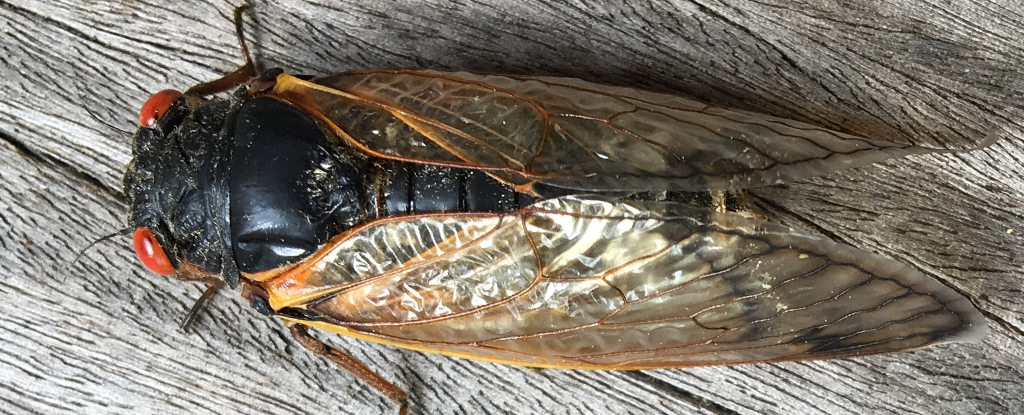Products You May Like
For years, they sleep. Nestled in shallow burrows a few feet beneath North America’s eastern forests, billions of nymphs belonging to the Magicada genus patiently await a time that’s quite literally prime for their emergence.
Come one spring evening, around 13 or 17 years after hatching, the immature insects rise as one in the cool of dusk, securing safety in their unimaginable numbers. They clamber skyward over stick, rock, and branch, molting and then mating while screaming for attention, only to leave the world silent once more as their numbers dwindle over the following weeks.
While the natural phenomenon of the periodical cicada is well known, the impact of this and similar ‘biomass pulses’ on local ecosystems has never been adequately mapped.
So researchers from George Washington University, the University of Maryland, and Georgetown University conducted a community-level study on the Brood X emergence of 2021, carrying out intense field studies on a conservation site in Maryland and gathering observations from volunteer birders.
Altogether, the team gathered feeding information on 983 individual birds representing 82 species, from tiny blue-gray gnatcatchers (Polioptila caerulea) to hefty trumpeter swans (Cygnus buccinators).
In spite of significant differences in body mass and diet, one thing many of the birds had in common was a predilection for a juicy morsel of bug-meat. In fact, more than half of the observed bouts of foraging included at least one cicada.
Surprisingly, the proportion of meal times featuring the insect didn’t vary much between the different types of consumer. Whether seeds were the usual fare, or nectar, fish, or fruit, few could pass up an opportune nibble of Magicicada.
Of course, as with any changes in the fast food market, there are bound to be a few winners and losers.
Stuffed to the brim with cicadas, many birds lost their appetite for oak-feeding caterpillars. Plasticine models of the grubs used to gauge predation rates revealed a marked drop in consumption in 2021, with bird strikes declining from around 30 percent to just 10 percent for several months.
One of the site’s most common caterpillar, the grub of the raspberry bud dagger moth (Acronicta increta), showed a marked change in size following the Brood X emergence, with as much as a 50-fold increase in the proportion of large larvae. Presumably, with so many cicadas on offer, the choicest of caterpillars found themselves with a temporary reprieve.
Moving further down the food chain, a relative rise in oak-feeding herbivores is bound to be bad news for the oak trees. Sure enough, the summer of 2021 saw a spike in damage to the leaves of the immature oaks.
Just what this might mean in the long term isn’t clear. Though prior research on acorn-producing oaks strongly suggests that an increase in herbivores could constrain that season’s production of new trees.
While previous studies have looked at the impact of cicada eruptions on local insect-eating populations, this is the first to trace the knock-on effects throughout the local environment, from flora to fauna.
“Our study demonstrates that periodical cicada emergences can ‘rewire’ forest food webs, altering interaction strengths and pathways of energy flow that affect multiple trophic levels,” the researchers write in their published report.
Even beyond predation, the deaths of vast numbers of periodical cicadas provide the soil with a pulse of nutrients.
Meanwhile, as the next brood of cicadas nestle in for a long rest, their burrows loosen and aerate the soil, almost as an apology to the trees above for the brief disruption they’ll bring to the ecosystem when they too eventually emerge.
This research was published in Science.
